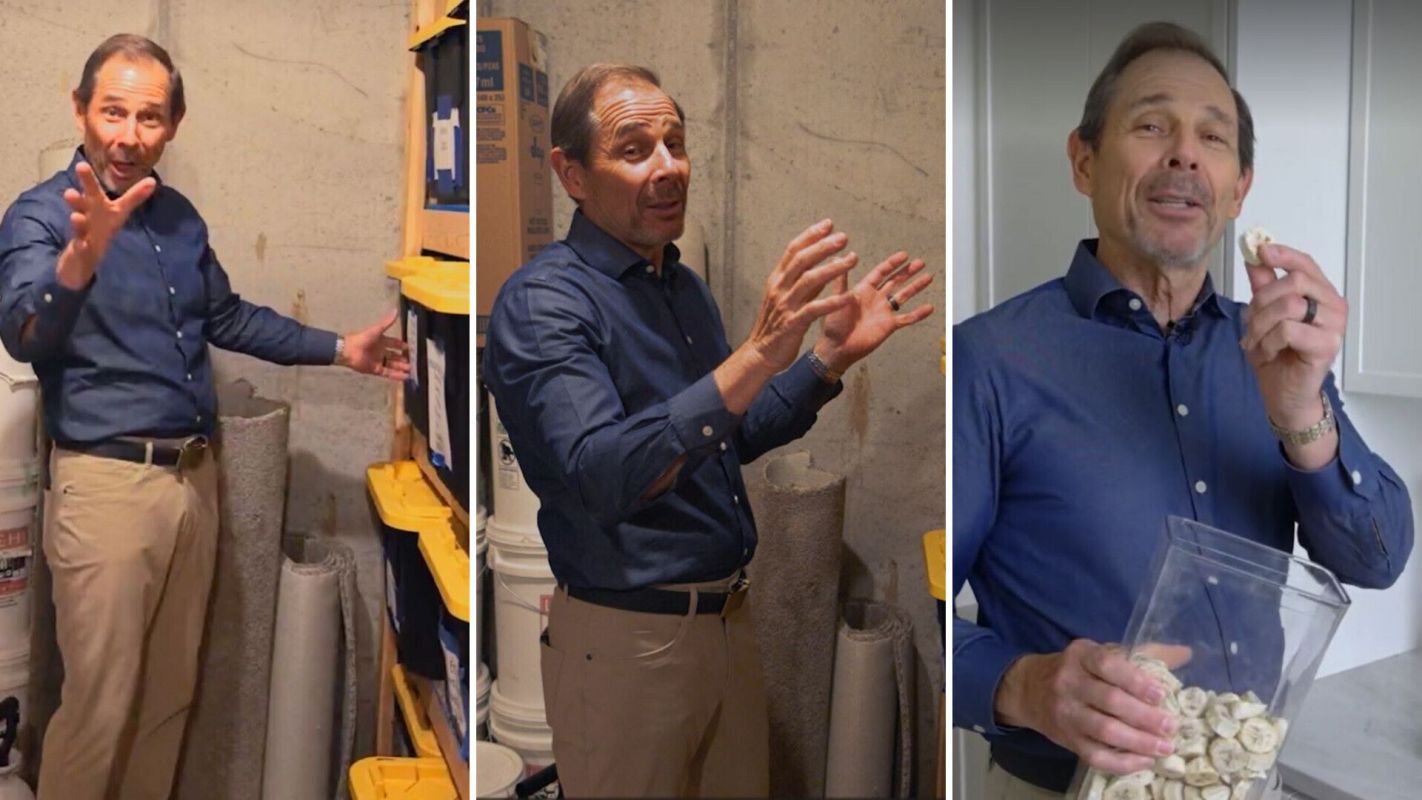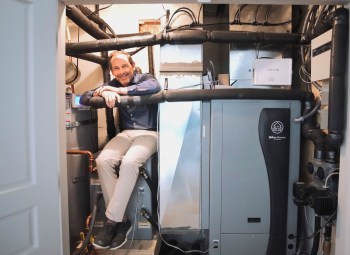What if your leftovers could provide you with a tasty, nutritious meal 25 years in the future?
That's the promise of freeze-dried food, a technology that's reportedly increasing in popularity for its ability to create healthy food that reduces waste and lasts for decades.
One of the biggest proponents of the freeze-dried revolution is Republican Rep. John Curtis. In an exclusive tour of his new, money-saving home, the Utah-based representative showed The Cool Down his "secret" hack for saving money and living a nearly zero-waste food life.
"It's a little thing my wife and I do that's kind of fun," he told us. "It's a big part of my life."
Curtis is known among friends and colleagues to break out a freeze-dried fruit snack on hikes, and he says "my staff teases me" because he'll bring home leftovers from events "because I don't want it to go to waste."
Curtis uses a Harvest Right Freeze Dryer at home. Freeze-drying works by freezing food well below zero degrees and then vacuum-drying the food. The technology enables food to retain most of its flavor and nutrition when reheated. It can also preserve foods that other methods cannot — like dairy and eggs — and it creates a product that is more shelf-stable, lightweight, and food-safe for longer than canning or dehydrating.
"There's a couple of reasons to do this. One is that I really like the food, and it makes a healthy snack," Curtis said. "Most importantly, it eliminates almost all food waste — [my family] actually rarely throws away food."
That's important, Curtis explained, because "from a climate perspective, that food, if it's wasted, means we're using carbon to produce it, and that food also rots and creates methane which we avoid as well." Methane gas creates pollution that overheats the planet.
Curtis and his wife store their freeze-dried food in vacuum-sealed bags that go in large bins in their basement's cold storage area. They've got everything from peaches and banana powder to roasted veggies, sliced onions, meats, Oreos, ice cream, and pineapple.
TCD x JOHN CURTIS
In fact, freeze-drying Skittles and other candies has become a trend on TikTok. And millions of people have watched Kerrina Sanchez (@FarmerKHomestead) freeze-dry spaghetti and all kinds of other foods on the platform. The global freeze-dried food market is expected to grow by more than 8% annually in the next three years.
For a home machine, it's definitely an initial investment. The machines start at about $2,000 and require some electricity to run. But the average American wastes an estimated $1,500 a year on food waste, so the math could add up in the long run.
"It's a small thing, but imagine if more and more people did it," Curtis said. "Now that we have this rapidly rising inflation and we go to the grocery store, and we see these prices going up and up and up, this is a real way to save money and cut down on that food bill, and every American could use that."
Join our free newsletter for easy tips to save more, waste less, and help yourself while helping the planet.











